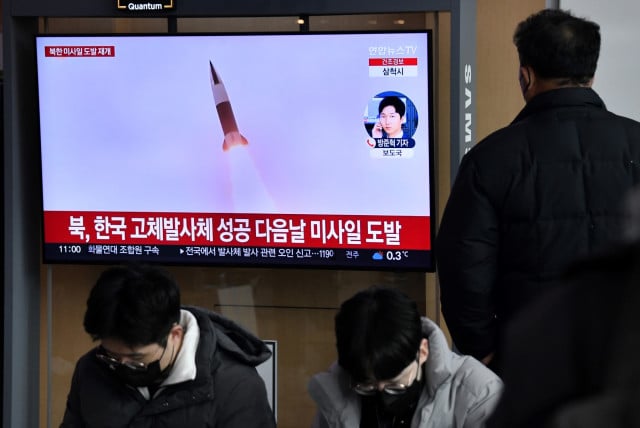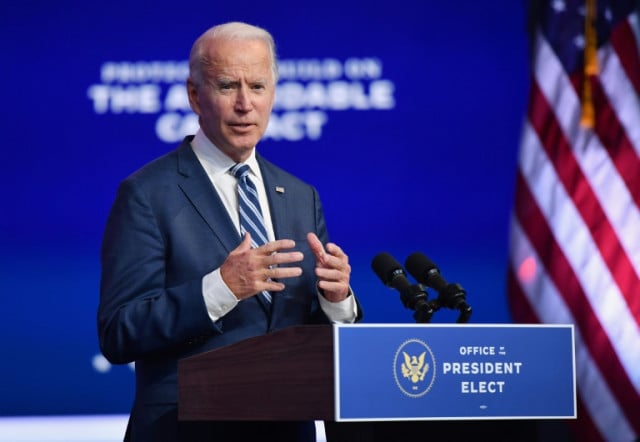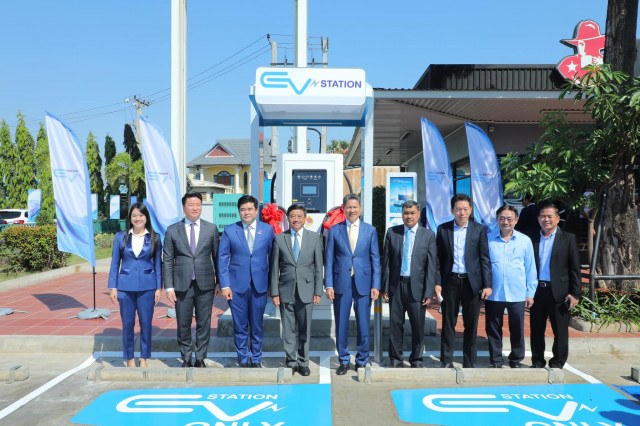North Korea fires 'long-range' ballistic missile, Seoul says

- By Agence France-Presse (AFP)
- February 18, 2023 5:02 PM
Seoul, South Korea - - North Korea fired a suspected long-range ballistic missile Saturday, South Korea's military said, Pyongyang's first test in seven weeks that comes days before Seoul and Washington are due to start joint tabletop exercises.
Seoul's military said it had detected the launch of "a presumed long-range ballistic missile fired into the East Sea from Pyongyang's Sunan area, around 17:22 (0822 GMT)," referring to the body of water also known as the Sea of Japan.
"The South Korean military maintains a full readiness posture while closely cooperating with the US and strengthening surveillance and vigilance," it added in a statement.
Japan also confirmed the launch, the coastguard saying the suspected ballistic missile had now landed, without giving details of exactly where.
Japan's vice defence minister Toshiro Ino said it was likely to fall "in the Sea of Japan within the exclusive economic zone of Japan, approximately 200 km west of Oshima, Hokkaido, at around 18:27 (0927 GMT)".
Military tensions have risen on the Korean peninsula after a year in which North Korea declared itself an "irreversible" nuclear state and carried out sanctions-busting weapons tests nearly every month, including firing intercontinental ballistic missiles.
In response, Seoul has ramped up joint military drills and cooperation with key security ally Washington, in a bid to convince the increasingly nervous South Korean public of America's commitment to deter nuclear-armed Pyongyang.
The Saturday launch -- Pyongyang's first since January 1 -- comes days before Seoul and Washington are due to kick off a new tabletop exercise in Washington, in which the two allies will discuss how they would respond to the use of nuclear weapons by Pyongyang.
The exercise next week will focus on "joint planning, joint management and joint response with Washington's nuclear assets" in case of a nuclear attack, a South Korean defence ministry official told AFP on Friday.
Pyongyang on Friday threatened an "unprecedentedly" strong response to upcoming US-South Korea drills, which it described as akin to preparations for war.
An Chan-il, a defector-turned-researcher who runs the World Institute for North Korea Studies, said the latest launch indicated North Korean leader Kim Jong Un "has finally pulled out his sword."
"North Korea has warned of retaliation over the upcoming US-South Korea drills," he told AFP, adding: "Kim Jong Un seems to want to confront the issue with a tit-for-tat approach."
- No talks, more missiles -
South Korea's hawkish President Yoon Suk Yeol, who took office in May 2022, has vowed to get tough on North Korea and is pushing to beef up America's so-called extended deterrence, under which US nuclear assets offer protection to regional allies.
Earlier this week, South Korea called Pyongyang its "enemy" in a defence document -- the first time in six years it has used the term, signalling a further hardening of Seoul's position.
North Korea has also ramped up its testing, including firing a ballistic missile last year that landed south of the de facto maritime border near South Korea's territorial waters for the first time since the end of the Korean War in 1953.
In December, it sent five drones across the border into Seoul's airspace, including skies near its presidential office.
Pyongyang has repeatedly said it is not interested in further talks, and North Korean leader Kim Jong Un recently called for an "exponential" increase in his country's nuclear arsenal.
At a military parade in Pyongyang last week, North Korea showed off a record number of nuclear and intercontinental ballistic missiles, including what analysts said was possibly a new solid-fuelled ICBM.
The weapons on show included at least 10 of North Korea's largest Hwasong-17 ICBMs, as well as vehicles apparently designed to carry a solid-fuelled ICBM.
North Korea has long sought to develop a solid-fuel ICBM because such missiles are easier to store and transport, as well as being more stable and quicker to prepare for launch -- and thus harder for the United States to detect and destroy pre-emptively.
cdl/ceb/dva
© Agence France-Presse















